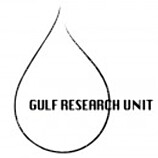
Archive: Gulf Research Blog
Blog articles from 2009 to 2012. The Gulf Research Unit is research programme based at the University of Oslo.
Framing the conflict
Denne artikkelen er over ti år gammel og kan inneholde utdatert informasjon.
By Kjetil Selvik
One year after the June 12. 2009 Presidential election, the battle over its significance for the Islamic Republic of Iran is far from over. Inside the country’s political class that historically agreed on the authority of Ayatollah Khomeini, two diametrically opposed narratives about the current stalemate have emerged. On the one hand stands the Green movement which importance lies in the fact that it is the first broad-based oppositional movement in Iran since the 1979 revolution. It strongly criticizes the Ahmadinejad government and demands full democratic rights. The government and the Leader have however developed their own narrative about the 2009 election and its aftermath to discredit and refute the claims of the opposition. They have their own interpretations about the current events and use their own labels. The following is a short introduction to how “the Greens” and the Ahmadinejad camp are framing the conflict.
The 2009 election
When representatives of the Green movement refer to the 2009 election they speak about a “coup d’Etat”. Ahmadinejad is the leader of a “coup d’Etat government” that has stolen the people’s vote. For hardline cleric Ahmad Janati, on the other hand, the 2009 presidential election was “one of the healthiest ever” and a model for other countries.[1] He follows Leader Ali Khamenei’s who on several occasions has praised the Iranian people for demonstrating the “profound meaning of religious democracy” to the world.[2]
Conflict line
There is an equally divided opinion of what constitutes the main conflict line in Iran today. For Mir Husayn Mousavi the presidential election was proof of a widening rift between the people and the ruling establishment that contradicts the essence of the Islamic Republic. A system that was made to bring freedom to Iran has ended up negating the rights of the people. For Ali Khamenei’s, however, the Islamic Republic is still the embodiment of the Islamic revolution, and the battle stands between the revolution and its enemies.
Threat perception
Defenders of the Green movement warn that Iran is in danger of becoming a dictatorship. As Grand Ayatollah Montazeri exclaimed in a September 14. letter to Islamic scholars, “what we see now is the government of a military guardianship, not the Guardianship of the Islamic Jurists (i.e. velayat-e faqih)”.[3] In the rhetoric of the ruling segment, however, the most acute threat facing Iran is that of a ‘velvet revolution’. This refers to a plot where foreign powers’ subversive agents collude with “internal enemies” to seek regime change from within. When members of the reform movement were prosecuted in the August 2009 show trials, the main accusation held against them was their supposed affiliation with this velvet revolution.
State of the system
The gap is equally great between how the government and the opposition characterize the state of the system. For the Green movement (and in fact also many conservative figures) the regime is in the middle of a deep political crisis. The opposition argues that the government will not be able to govern normally until it accommodates the wishes of the people. President Ahmadinejad and his associates, on the other hand, deny as baseless the idea of a crisis. For them, it is still “business as usual” in Iran and the Islamic Republic is stronger than ever.
Popular protest
For the Green movement, popular protests are a sign of hope. They imply that the people refuses to resign to government repression and continues its fight for self-determination. The Green movement’s organizational body is named “the green path of hope”. In government rhetoric, by contrast, popular protests are associated with chaos, or fitna which is the Arabic word used to denounce a breakdown of the Islamic order. Websites affiliated with the president consequently use the expression saran-e fitna, i.e. “leaders of sedition”, when speaking about Khatami, Karubi, and Mousavi.
Action needed
The way to end the current crisis is according to the Green movement to reconnect the Islamic republic with the people. As Mousavi says in his 11th statement, “a restoration of public trust is not possible without the acceptance of the right of the people to govern itself”.[4] For government forces, however, the question is one of punishing “troublemakers” (eghteshashgar). Following the December 2009 Ashura protests Interior minister Mostafa Mohammad Najjar warned that “anyone who takes part in riots will be considered as mohareb (waging war on God) and an opponent of national security”.[5]
Ultimate authority
The bottom line is that the government and the opposition have different ideas of what constitutes the ultimate authority in the Islamic Republic. The Green movement points to the 1979 Constitution as the embodiment of the “national will” and the guideline for all political interactions. They quote the late Ayatollah Khomeini saying that “the criterion is the vote of the people” (mizan ray-e mardom ast). The neo-conservatives, by contrast, place Ali Khamenei above the law as the Islamic Republic’s ultimate authority.
[1] http://www.khabaronline.ir/news-39859.aspx
[3] http://khordaad88.com/?p=570






